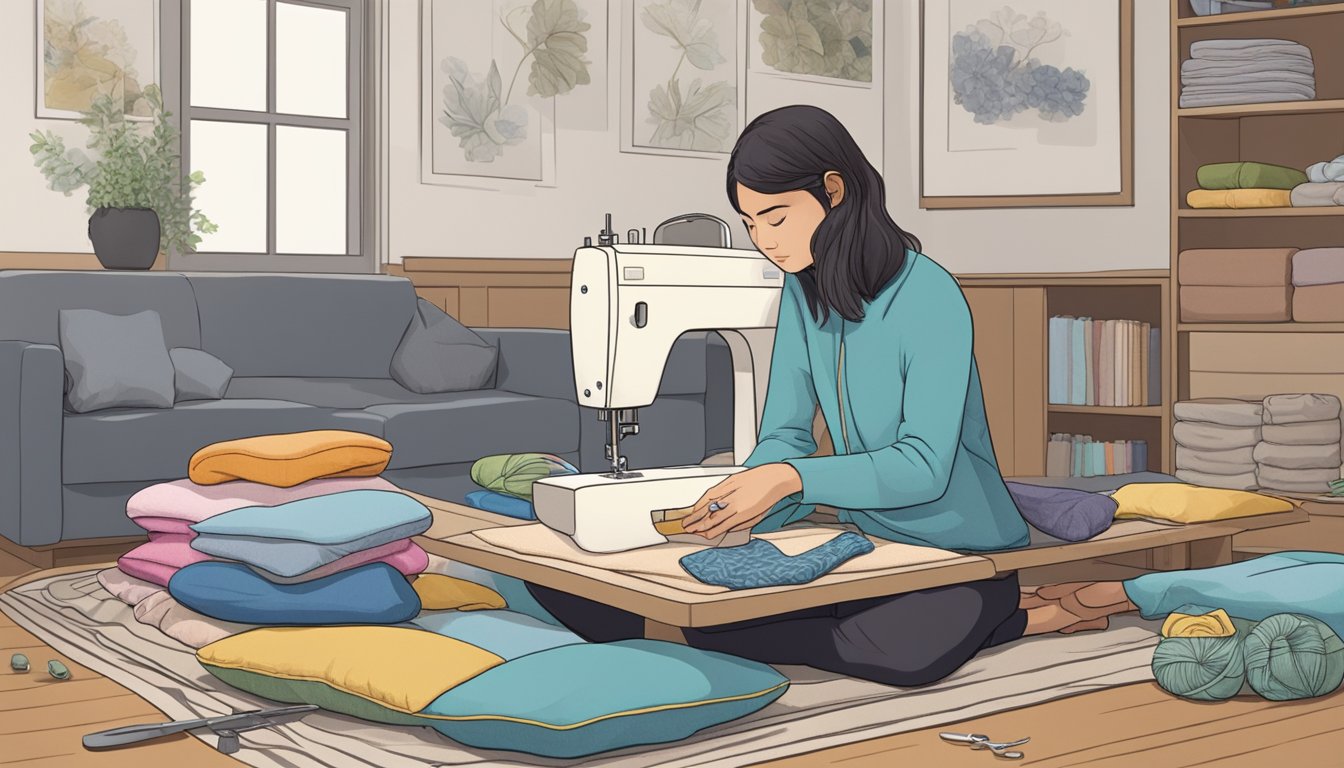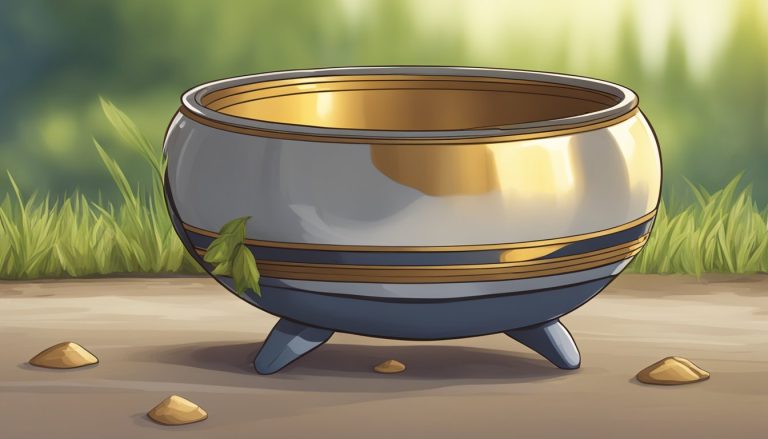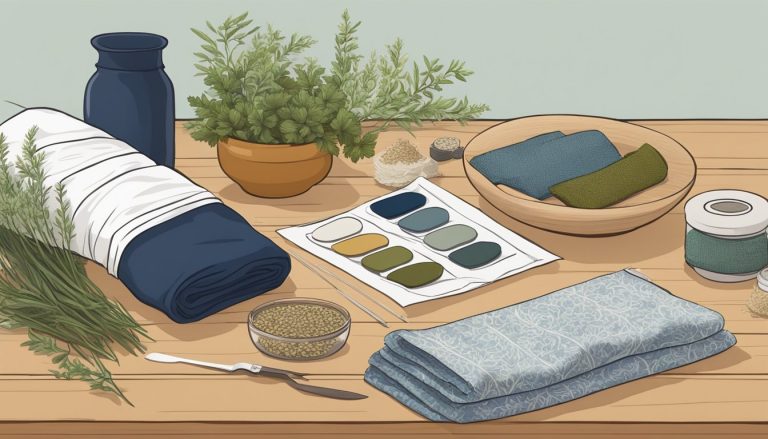How to Make a Zabuton Meditation Cushion: A Step-by-Step Guide
Making your own zabuton meditation cushion is a great way to enhance your meditation practice.
Zabutons are large, comfortable floor pillows that are often used with a zafu, or round meditation cushion. They provide essential cushioning for your ankles and knees when sitting cross-legged on a zafu or on a meditation bench.
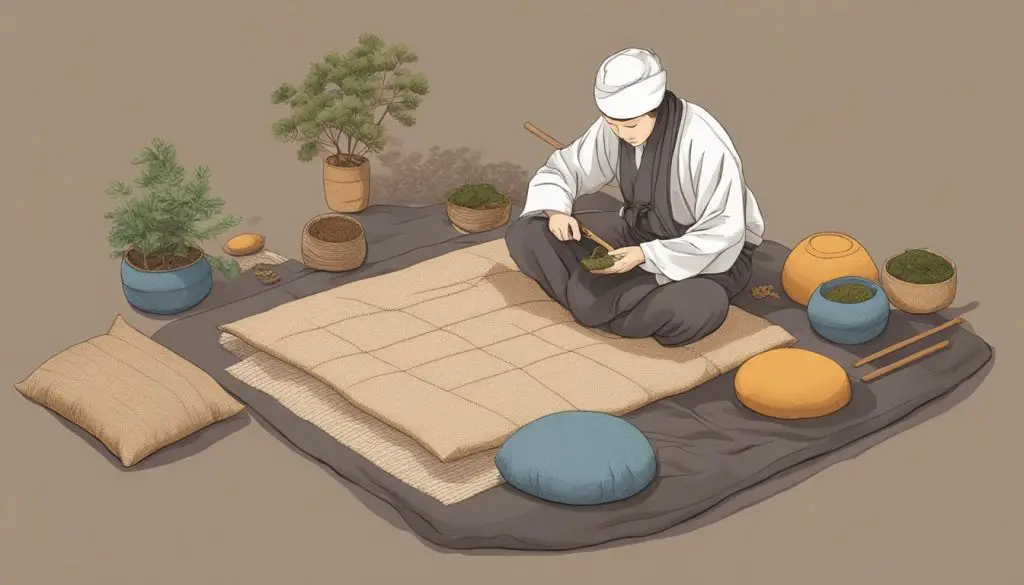
In this article, I will guide you through the steps of making your own zabuton meditation cushion. We will start by understanding what zabuton cushions are and why they are important for meditation.
Then, we will move on to selecting the right materials for your cushion and creating your zabuton. Finally, we will discuss how to customise your meditation cushion to fit your specific needs and how to maintain and care for it properly.
Key Takeaways:
- Zabuton cushions are essential for comfortable and effective meditation practice.
- Selecting the right materials is crucial for creating a high-quality zabuton cushion.
- With a few simple steps, you can create a personalised zabuton cushion that will enhance your meditation practice for years to come.
Contents
What Are Zabuton Cushions?
When it comes to meditation, having the right cushion can make a huge difference in your practice. That’s where the zabuton cushion comes in. Here’s what you need to know about the history and purpose of zabuton cushions, as well as the benefits of using one in your meditation practice.
History and Purpose of Zabuton
Zabuton cushions have been used in Japan for centuries as a way to provide a comfortable sitting surface for traditional Zen meditation. The word “zabuton” itself means “sitting mat” in Japanese. These cushions are typically rectangular in shape and filled with cotton batting or kapok, a natural fibre that is soft and supportive.
The purpose of the zabuton cushion is to provide a comfortable and stable base for the meditator to sit on. By placing the zabuton on the floor and sitting on top of it, the meditator can relax their hips, pelvis, and spine, which can help to reduce tension and discomfort during long periods of sitting.
Benefits of Using a Zabuton in Meditation
There are many benefits to using a zabuton cushion in your meditation practice. Here are just a few:
- Improved posture: Sitting on a zabuton can help to improve your posture by encouraging you to sit up straight and align your spine properly.
- Increased comfort: The soft and supportive surface of a zabuton cushion can help to reduce pressure on your hips, pelvis, ankles, feet, and knees, which can make it easier to sit comfortably for longer periods of time.
- Better energy flow: By sitting on a zabuton cushion, you can help to promote better energy flow throughout your body, which can help to reduce stress and improve overall health and wellbeing.
Selecting Your Materials
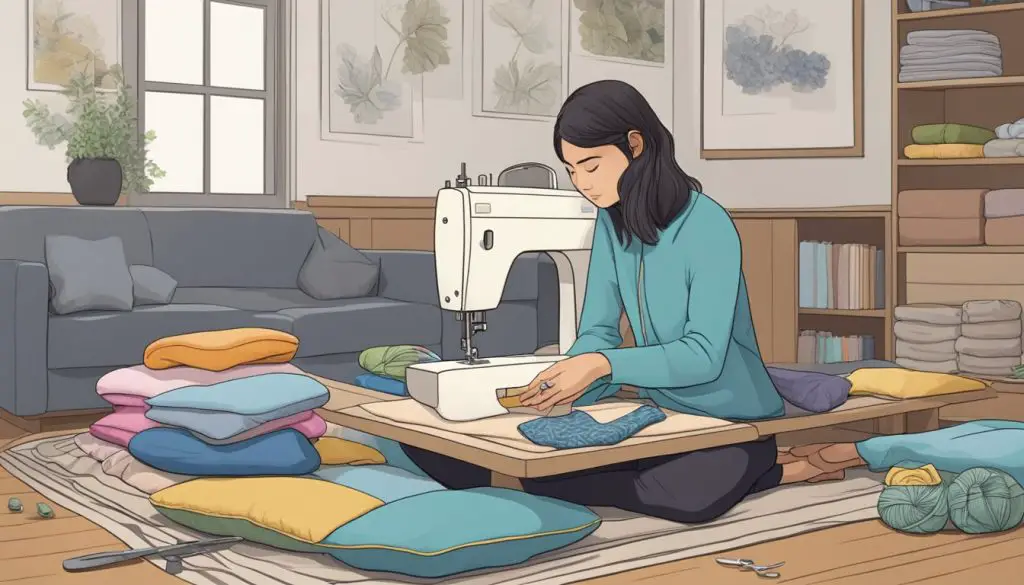
When it comes to making a zabuton meditation cushion, selecting the right materials is essential to ensure comfort and durability. In this section, I will guide you through the process of selecting the right fabric and fill for your cushion.
Types of Fabric
The first step in selecting your materials is choosing the right fabric for your zabuton cushion. The most common fabrics used for zabuton cushions are cotton, linen, and silk.
Cotton is a popular choice due to its durability and affordability. Linen is another great option as it is lightweight and has a natural sheen. Silk is a more luxurious option that provides a soft and smooth texture.
When selecting your fabric, make sure to consider the weight and texture of the material. A heavier fabric will provide more support and durability, while a lighter fabric will offer more flexibility and breathability.
Choosing the Right Fill
The next step is choosing the right fill for your zabuton cushion. The most common fills used for zabuton cushions are buckwheat hulls, kapok, and cotton batting.
Buckwheat hulls are a popular choice as they provide firmness and support, while kapok is a softer and more lightweight option. Cotton batting is another great option as it is soft and comfortable.
When selecting your fill, consider the firmness and support that you require. If you prefer a firmer cushion, then buckwheat hulls may be the best option for you. If you prefer a softer cushion, then kapok or cotton batting may be a better choice.
Considering Quality and Comfort
Finally, it is important to consider the quality and comfort of your materials.
When selecting your fabric and fill, make sure to choose high-quality materials that are durable and long-lasting. Organic cotton is a great option if you are looking for a more eco-friendly and sustainable option.
It is also important to consider the comfort of your cushion. A well-made zabuton cushion should provide ample support and comfort during meditation. When selecting your materials, be sure to choose a combination that provides the right level of support and comfort for your needs.
Creating Your Zabuton
Cutting and Sewing the Outer Cover
To create the outer cover of the zabuton, I first measured and cut a square piece of fabric to the desired dimensions. I used a pattern to ensure that the fabric was cut accurately.
Once the fabric was cut, I folded it in half and sewed along three of the edges, leaving one edge open for the zipper.
Next, I added a zipper to the open edge of the cover. I measured and cut a strip of fabric to the same width as the cover and sewed it to the open edge. Then, I sewed the zipper to the fabric strip using a sewing machine.
Finally, I turned the cover right side out and added a seam allowance around the edges. I hand-stitched the seam allowance to ensure that it was secure.
Preparing the Inner Cushion
To prepare the inner cushion of the zabuton, I measured and cut a square piece of cotton padding to the same dimensions as the outer cover. Then, I cut a circle of fabric to the same size as the cotton padding.
I used kapok fiber as the stuffing for the cushion. I filled the circle of fabric with the kapok fiber, making sure that it was evenly distributed. Then, I placed the cotton padding on top of the kapok fiber.
Assembling the Cushion
To assemble the cushion, I placed the inner cushion inside the outer cover, making sure that it was centered. Then, I hand-stitched the open edge of the cover to the zipper, ensuring that the cushion was securely enclosed.
The final step was to measure the height and weight of the zabuton to ensure that it was the correct size and weight for comfortable meditation. The dimensions of the zabuton can be adjusted to suit individual preferences.
Customising Your Meditation Cushion
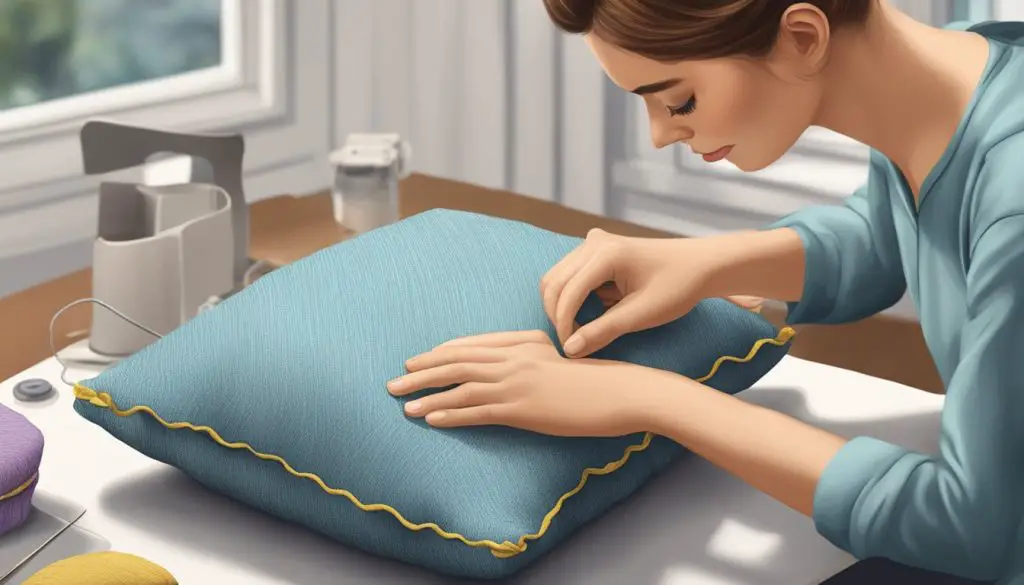
Adding Personal Touches
Making your own zabuton cushion is a great way to add a personal touch to your meditation practice. You can choose the fabric and colour that speaks to you and even add some embellishments to make it unique.
If you’re feeling crafty, you can add pleats or tufting stitches to give your cushion some texture.
Another way to personalise your cushion is by adding a zippered, removable cover. This will allow you to easily wash the cover and keep your cushion looking fresh. You can even mix and match colours and fabrics to create a one-of-a-kind cushion.
Adjustable Features for Comfort
Comfort is key when it comes to meditation cushions, and there are a few features you can add to make your cushion more comfortable.
If you prefer a dimpled surface, you can add some extra padding to the centre of your cushion. This will provide extra support for your sit bones and help you maintain good posture.
On the other hand, if you prefer a smooth surface, you can use a thinner cushion or remove some of the stuffing. This will allow your hips to sink down into the cushion, creating a comfortable, stable base for your meditation practice.
For those who want a deluxe version of their zabuton cushion, you can add an adjustable feature. This can be done by adding a layer of foam or batting to the cushion and then covering it with a removable cover. This will allow you to adjust the firmness of your cushion to suit your needs.
If you’re looking for an economy zabuton cushion, you can use a thinner fabric or less stuffing to create a more budget-friendly option.
Maintenance and Care
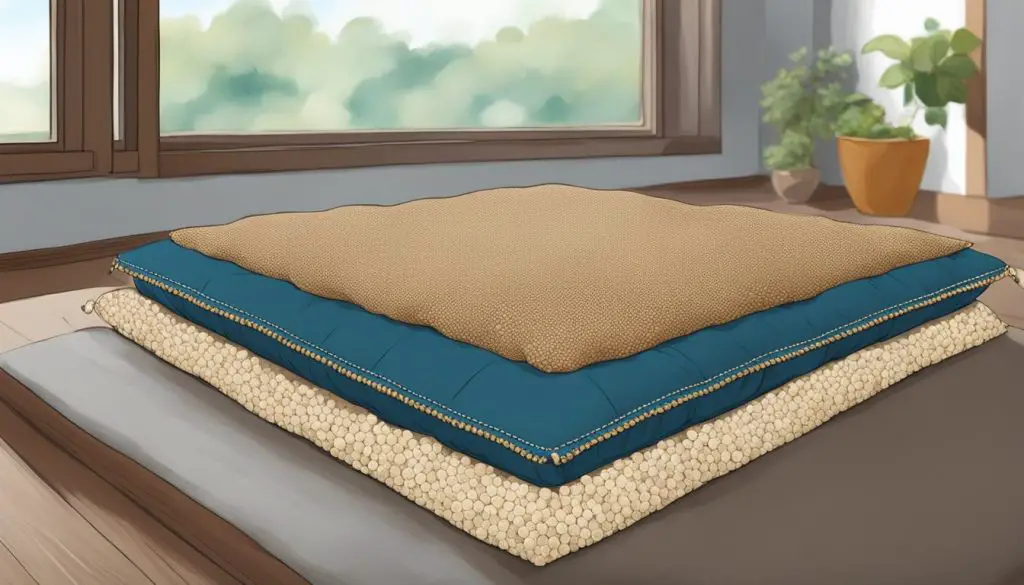
Cleaning and Storage
As with any cushion, it’s important to keep your zabuton clean and well-maintained.
One of the benefits of using a zabuton is that many models come with a removable cover that can be easily washed. If your zabuton has a removable cover, I recommend washing it on a cold cycle either by machine or by hand. You may also dry clean the cover if you prefer.
It’s important to note that the inner muslin lining can be spot cleaned with a damp cloth.
If your zabuton doesn’t have a removable cover, you can still clean it by spot cleaning with a damp cloth. Be careful not to saturate the cushion with water, as this can damage the filling.
If you need to store your zabuton for an extended period of time, it’s best to keep it in a cool, dry place away from direct sunlight.
Long-Term Durability Tips
To ensure that your zabuton lasts as long as possible, there are a few things you can do to help maintain its shape and support.
First, make sure to fluff the cushion regularly to redistribute the filling. This will help prevent the filling from clumping and losing its shape over time.
Another important factor to consider is the quality of the filling. Organic buckwheat hulls are a popular choice for zabuton cushions, as they provide a firm yet comfortable support. If you’re purchasing a zabuton, be sure to check the reviews and customer service policies of the manufacturer to ensure that you’re getting a high-quality product.
Finally, the fabric of the cushion can also impact its durability. Cotton and muslin fabrics are both popular choices for zabuton cushions, as they are breathable and comfortable. However, it’s important to make sure that the fabric is of high quality and won’t easily tear or wear down over time.
Frequently Asked Questions
What materials are needed to craft a meditation cushion?
To craft a meditation cushion, you will need a few materials. Firstly, you will need fabric for the cushion cover. The fabric should be durable and comfortable to sit on for long periods. Cotton twill, canvas, or linen are good options.
You will also need a filling for the cushion, such as kapok, buckwheat hulls, or cotton batting.
Lastly, you will need a sewing machine and thread to sew the cushion together.
Can you provide a step-by-step guide for creating a floor cushion?
Yes, I can. Firstly, cut two pieces of fabric to the desired size of your cushion. Then, sew the two pieces of fabric together, leaving a small opening to stuff the cushion.
Next, fill the cushion with your chosen filling, making sure to evenly distribute it. Lastly, sew up the opening and your cushion is complete.
How does one choose the appropriate filling for a meditation cushion?
The appropriate filling for a meditation cushion depends on personal preference. Kapok is a popular choice as it is firm and supportive. Buckwheat hulls are also a good option as they conform to your body shape.
Cotton batting is softer and provides less support but is still comfortable. Try out different fillings before deciding which one is best for you.
What are the dimensions for a standard meditation cushion?
The dimensions for a standard meditation cushion are around 18 inches by 18 inches and around 3 inches in height. However, you can adjust the size to fit your personal needs.
How can I differentiate between various meditation cushion types?
There are various types of meditation cushions, including zabuton, zafu, and crescent cushions.
Zabuton cushions are rectangular and provide cushioning for the knees, ankles, and feet. Zafu cushions are round and provide support for the hips and lower back. Crescent cushions are similar to zafu cushions but have a curved shape to provide additional support for the legs.
What are some tips for maintaining the quality of a meditation cushion over time?
To maintain the quality of your meditation cushion, it is important to keep it clean and dry. Spot clean any spills or stains as soon as possible to prevent them from setting in.
Air out your cushion regularly to prevent any musty smells from developing. Lastly, store your cushion in a dry and cool place when not in use.

